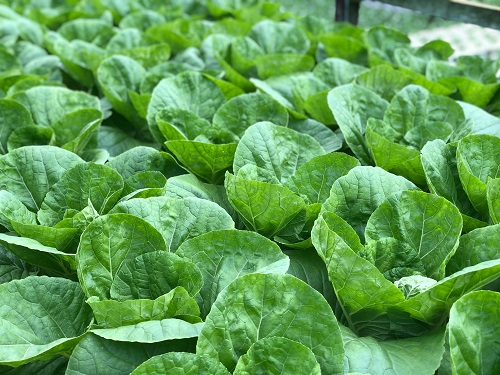Cabbage Farming

Embarking on cabbage farming in Kenya offers a lucrative opportunity, with an average yield of 25-30 tons per acre. Valued at KES 25,000 per ton translates to a potential income ranging from KES 625,000 to KES 750,000 per acre.
Successful cabbage farming hinges on a comprehensive approach involving careful planning, strategic site selection and preparation, and consistent ongoing management.
The focus of cabbage production is meeting the diverse demands of local consumers, restaurants, retailers, and wholesalers. It goes beyond traditional farming; it’s a purpose-driven venture that addresses the community’s requirements and strives for success in the cabbage market.
Developing a business model around cabbage farming in Kenya involves several key elements.
Here is a step-by-step guide:
Farming Process:
Site Selection:
You should prioritize choosing well-drained soils with reliable water sources.
Ideal soil conditions involve loamy soils with good organic matter and a pH of around 6.5.
Variety Selection:
Carefully select cabbage varieties based on the climatic region, market preferences, maturity period, and disease resistance.
Consider varieties like Green Express, Savoy, Red Acre, and Napa to diversify your offerings.
Seed Acquisition:
Ensure consistency and health by purchasing certified seeds from reputable suppliers, either at trusted agrovets or seed companies.
Land Preparation:
opt for either manual or commercial ploughing to prepare the land, experienced farmers advice, tilling the soil, and applying compost or well-rotted manure before transplanting or direct seeding.
Planting:
Nursery: Establish a controlled nursery environment with well-draining soil. Sow cabbage seeds in trays or seedbeds, maintaining optimal moisture and temperature. Once seedlings reach 4-6 weeks, transplant them into individual containers for robust growth.
Transplanting: Select a sunny, well-drained field. Transplant cabbage seedlings when they have 4-6 leaves and are about 4-6 weeks old. Space plants according to recommended distances, ensuring proper aeration. Water thoroughly after transplanting and provide ongoing care for healthy cabbage development.
To achieve good growth and maximize yields, farmers may take into consideration the following factors.
- Seeding Rate: 250-400g (9 to 14 oz.) of seeds per hectare
- Number of Plants per hectare: 20,000-40,000 plants
- 1 hectare = 2.47 acres = 10,000 square meters
- Distance between plants in the row: 40-70 cm (15-27 inches)
- Distance between rows: 60-90 cm (23-35 inches)
Note: Plant spacing varies based on the desired size of each cabbage head; closer plant proximity results in smaller heads.
.
Fertilizer application - Conduct a soil analysis before applying fertilizer for a precise understanding of nutrient levels.
- Aim for nutrient-rich soil by incorporating well-rotted manure two weeks before planting and adding fertilizer to young seedlings 2-3 weeks after transplant.
- Prefer balanced granular fertilizers like N-P-K 10-10-10 or 10-3-3, applied directly to the soil surface while avoiding contact with young plants to prevent burning.
Crop Management:
- Adopt a multi-faceted approach for effective crop management.
- Weed Control: Engage in manual weeding and organic mulching during early growth stages.
- Pest and disease management:
Regularly scout for pests, encourage natural predators, and use organic pesticides. Also, select disease-resistant varieties, practice crop rotation, maintain cleanliness, and judiciously use fungicides. - Harvesting:
Utilize a sharp knife to cut cabbage heads without damaging surrounding leaves. For large commercial cabbage farms, harvesting can be mechanized through tractor-attached automated machines. - Storage:
After harvesting, store cabbage in a cool, humid environment to prolong shelf life. - Management Practice:
Implement crop rotation to prevent diseases. Apply balanced fertilizers during growth stages. Monitor for pests and use organic controls. Maintain consistent soil moisture. Harvest cabbage heads when firm. - Business Operations
Marketing and Sales:
Build relationships with local markets, retailers, and restaurants. Additionally, utilize direct sales to consumers through farmer’s markets or road stands. - Record Keeping:
Maintain detailed records of your farming activities, expenses, yields, and sales. This will facilitate progress tracking and informed decision-making.
Income Potential:
Your cabbage farming venture boasts an income potential of KES 625,000 to KES 750,000 per acre. This is driven by the production of high-quality varieties catering to diverse market preferences.
Cost of investment:
Land: The cost of land per acre can vary widely depending on location and other factors. As an estimate, land costs could range from KES 200,000 to KES 500,000 per acre.
Seeds: Certified cabbage seeds typically cost around KES 2,000 to KES 5,000 per kilogram. Depending on the seeding rate and acreage, the cost of seeds for one acre could range from KES 5,000 to KES 15,000.
Equipment:
Plowing equipment: If hiring, costs may range from KES 5,000 to KES 15,000 per acre, depending on the service provider and land condition.
Nursery equipment: Trays or seedbeds may cost around KES 1,000 to KES 3,000 per acre, with additional costs for irrigation equipment.
Transplanting equipment: Depending on the scale, hand tools may cost around KES 500 to KES 2,000 per acre.
Fertilizers: Costs for well-rotted manure or compost could range from KES 5,000 to KES 15,000 per acre, while balanced granular fertilizers may cost around KES 3,000 to KES 7,000 per acre.
Pest and Disease Control: Budget around KES 3,000 to KES 10,000 per acre for organic pesticides, fungicides, and pest management tools.
Labor: Labor costs vary significantly depending on factors such as location, labor availability, and wage rates. As an estimate, labor costs for activities such as land preparation, planting, weeding, and harvesting may range from KES 20,000 to KES 50,000 per acre.
Miscellaneous Expenses: Miscellaneous expenses such as irrigation costs, utilities, transportation, packaging materials, and administrative expenses may add another KES 10,000 to KES 30,000 per acre.
Adding up these estimates, the total investment required to start a cabbage farming venture in Kenya could range from approximately KES 50,000 to KES 150,000 per acre.

